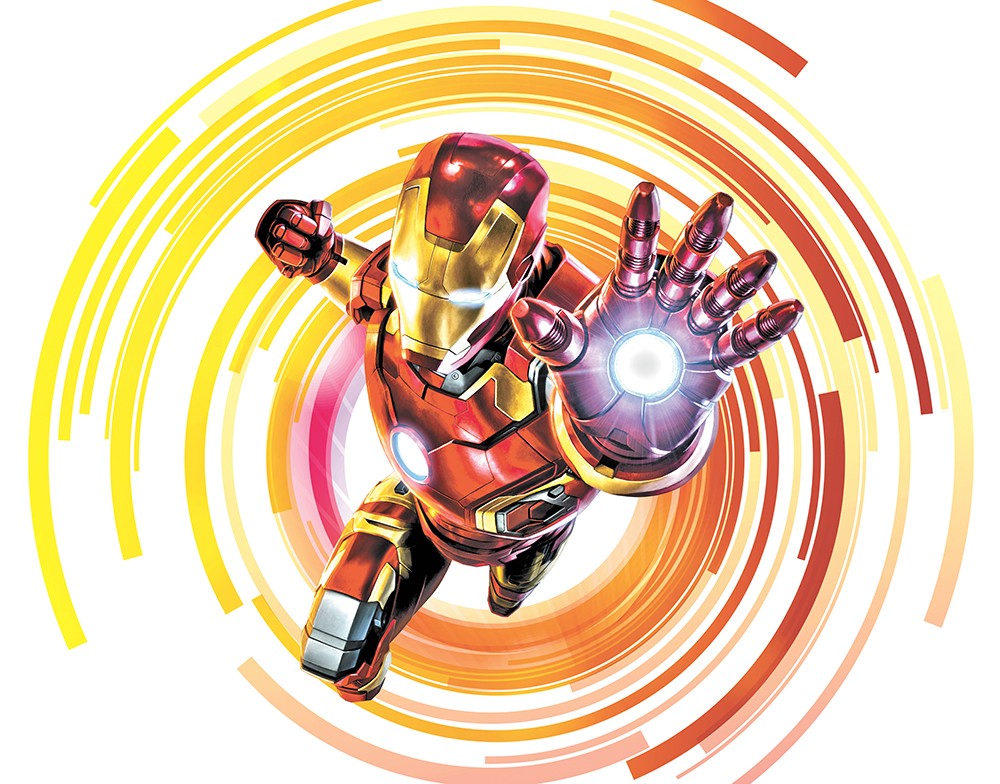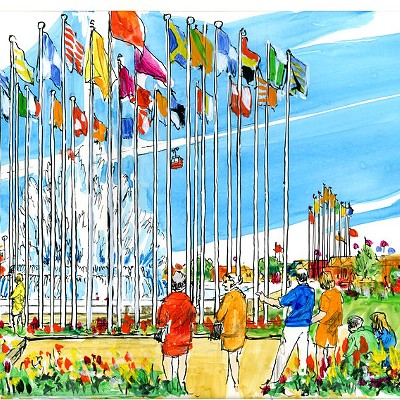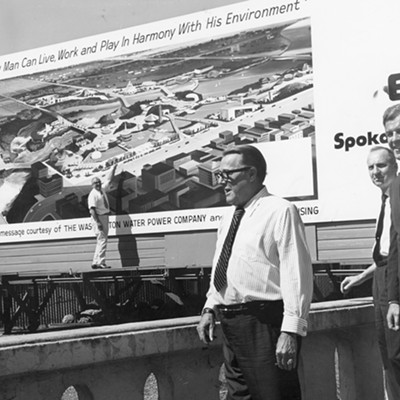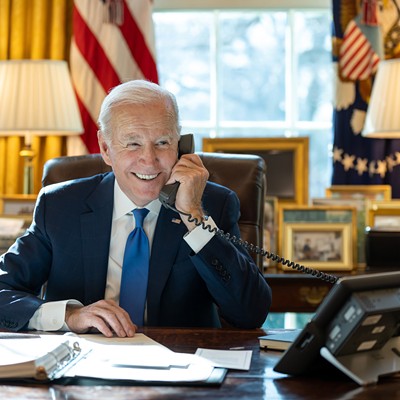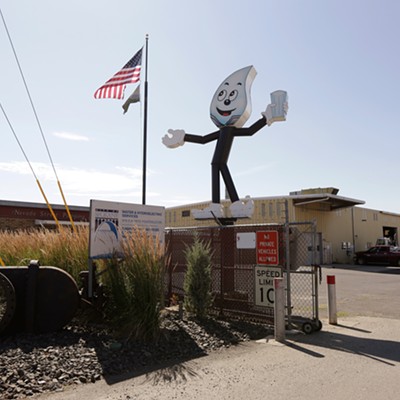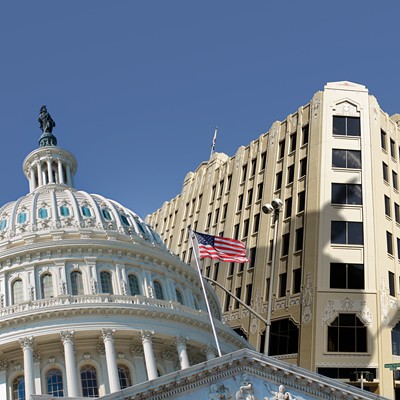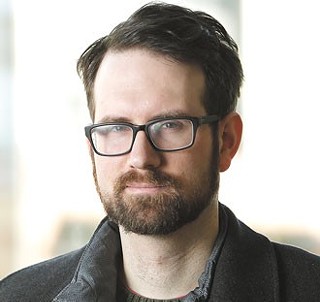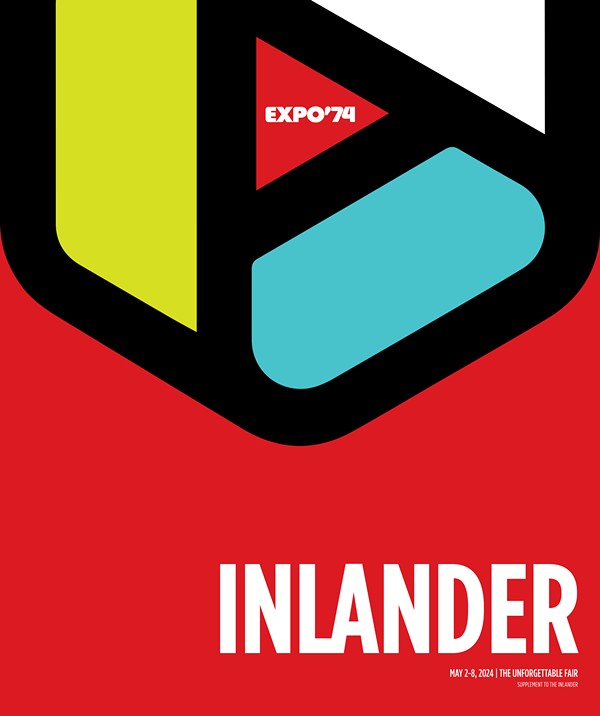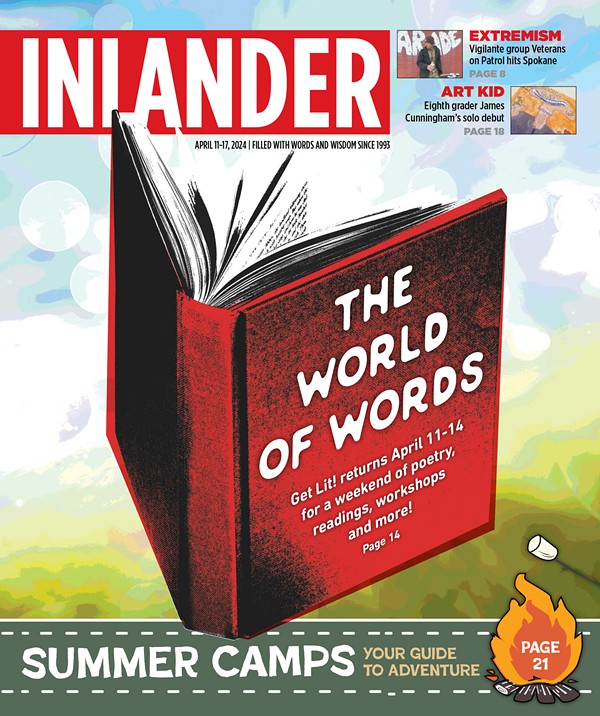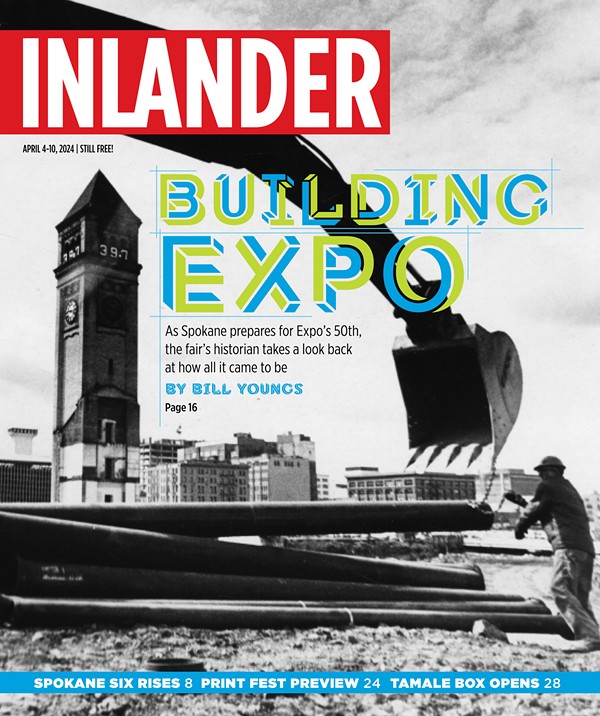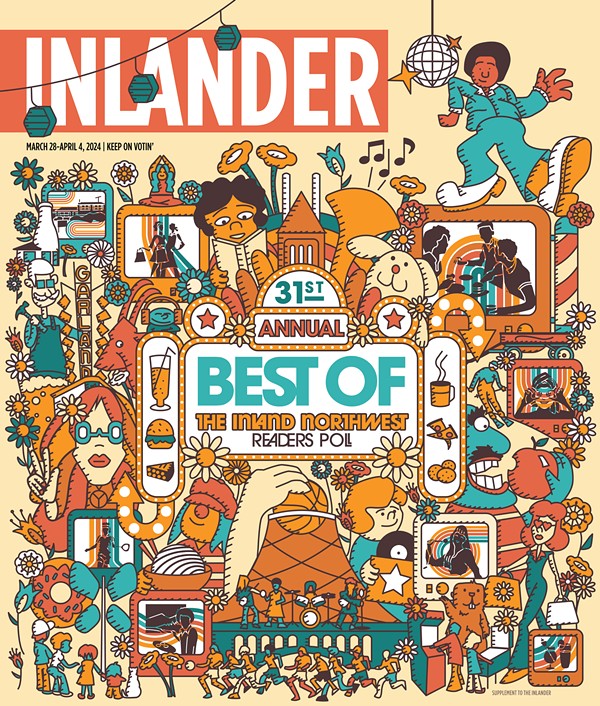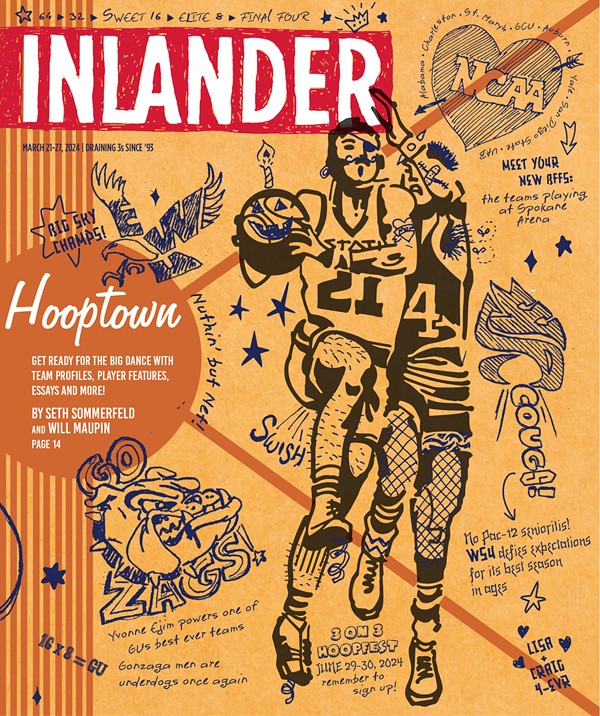Say Marvel, the comic-book publisher-turned-movie studio, got its hands on a glove — a gauntlet, if you will — that could bend reality to its will. Say it already has.
After all, by the time Age of Ultron ends its theatrical run, three of the top-grossing movies of all time will have at least one Iron Man in them. When Ant-Man hits theaters this July, Marvel will have churned out half the number of movies in seven years that the James Bond franchise did in more than five decades. That's not even counting the five Spider-Man movies or the seven X-Men movies produced by other studios.
As if to demonstrate its infinite power, last year Marvel gave us Guardians of the Galaxy — a movie based on an absurdly obscure comic series, starring an angry raccoon and a walking tree with a single-sentence vocabulary. And it made more than $750 million.
It's Marvel's cinematic universe now. We just live in it.
The dominance goes much further than box-office receipts. As the stunt-packed Marvel Universe LIVE! spectacular — including Thor, Spider-Man, Wolverine, Loki, Captain Marvel and Doctor Octopus — hits the Spokane Arena, it shows just how much of pop culture is stamped "Marvel."
Iron Man still doesn't sell many comic books, says John Waite, owner of Merlyn's, a comic-book shop in Spokane.
"But if you go to Beijing or Tokyo or Paris, every kid knows Iron Man," says Waite. The idea of Iron Man — trumpeted from movie screens, billboards, T-shirts, backpacks, dorm room posters, Underoos, Halloween outfits and Pez dispensers — is everywhere.
But this success was hard-won. Like Iron Man himself, Marvel started out reckless and overconfident, crashed spectacularly, and then built itself back up from nothing. Now, with the whole world in its iron grip, even fans are asking: Is Marvel the mightiest protector of the struggling movie business, or its most powerful supervillain?

Age of apocalypse
Once upon a time, Marvel was known for making comic books. In the early '90s, Marvel was king of the comic-book universe. Then that universe collapsed. By 1999, all comic-book sales were little over a quarter of what they'd been six years earlier.
Like the Beanie Babies bubble, the comic-book industry had been driven to ridiculous heights by collectors. Real-life Comic Book Guys bought reams of comics and kept them sealed in mint condition, hoping someday they'd be worth a fortune. Marvel was just as greedy — issuing alternate covers and trading cards to drive the collector hype even higher. Until the bubble burst.
By 1996, Marvel had filed for Chapter 11 bankruptcy. Corporate raiders battled over the scraps.
"I had stock in Marvel at that time," Waite says. "I was a believer and I rode it all the way down to nothing. I still have some certificate that says I own 2,000 shares, that are worth zero."
As Marvel struggled financially, it struck deals with movie studios. The right to make Spider-Man movies went to Sony, while the rights to X-Men and the Fantastic Four went to Fox. Desperation made for a poor bargaining position. Spider-Man and X-Men were smash hits, but Marvel got only a sliver of the proceeds.
It was time for a gambit. The company struck a financing deal with Merrill Lynch. Putting up Captain America himself — or at least his film rights — as part of the collateral, it had enough to buy back the movie rights for many characters, and produce 10 movies on its own.
It gave Marvel access to the next phase of its master plan: Build Iron Man.
Avengers assemble
By today's Marvel standards, the first Iron Man movie was surprisingly small-scale. No gods, no gems of power, no nukes, no save-the-known-universe finale. But then came the scene after the credits, when Nick Fury — a comic-book character long ago redesigned to look like Samuel L. Jackson — tells Tony Stark, "I'm here to talk to you about the Avengers Initiative."
In other words, "I'm here to talk to you about Marvel's plan to conquer the world."
Other studios chugged along with a stable of reliable franchises churning out sequels and reboots, while occasionally trying their hand at an original property. Marvel, drawing from the long tradition of comic-book crossovers, is just one giant franchise, writhing with many tentacles. One hit movie connects, nourishes and promotes the next.
Marvel divides its movie slate in supervillain terms: "Phase 1," "Phase 2" and "Phase 3." Stalin may have had his five-year plan, but Marvel is more ambitious — mapping films out internally to 2028.
The Marvel juggernaut demolished the wall between art and commerce. Fans excitedly discuss not just upcoming movies, but the behind-the-scenes studio politics over the rights to Quicksilver, Scarlet Witch and Spider-Man. Commercials for future movies are stuck inside current ones. Moviegoers will sit dutifully through the credits, just so they can get a 15-second taste of the next round of hype.
So when Jackson struck his deal with Marvel, it wasn't to star in one movie: It was to star in nine.
Iron Man, in the hands of Elf's director, featuring a star tainted by years of rehab tabloid covers, was a risk. It could have flopped as hard as the first modern Marvel movie: Howard the Duck. Iron Man didn't exactly have Spider-Man's brand recognition, but he fit the spirit of the times.
"In the post 9-11 environment, when the military was such a huge thing again, Iron Man was tied to the military-industrial complex," says Oliver Sava, a freelance comics critic for the Los Angeles Times. And Tony Stark, the man in the iron suit, wasn't a god or a super soldier. He was human.
"Starting with Iron Man, it grounds the entire universe," Sava says.
It wouldn't have mattered if it hadn't been for Robert Downey Jr., who shades Stark's arrogance with sardonic charm. Casting makes the Marvel movies work. Chris Evans' Captain America beams with apple-pie earnestness. Mark Ruffalo's Bruce Banner brilliantly veers away from the more obviously tortured portrayals of the Hulk's alter ego to more of a wry, "aw-shucks" softie.
Yes, Hulk smashes. But Banner shrugs with a weary smile.
As a mission statement for Marvel, you couldn't do better than the final scene of Iron Man. Told to keep his identity secret, Stark stands before reporters and defies superhero convention, announcing: "I am Iron Man."
No secret identity angst, no stubbled brooding, just "It's me!" — cut to AC/DC.
There are vague gestures toward weighty ideas in Marvel movies, but those are swiftly swept aside for the paramount theme of fun. Let Christopher Nolan's movies ponder the resilience of the human spirit amid terrorism; Marvel has a raccoon firing a machine gun.
Rather than profound, Marvel aims for awesome. For Marvel's investors, it's been awesome indeed. The year after Iron Man, Disney bought Marvel Entertainment for a staggering $4 billion. And the reign is just beginning.
New universe
Before Marvel could take over the world, the world had to change.
Adolescence conquered adulthood. These days, adults can read Harry Potter, play video games or watch cartoons without fear of mockery.
Nerds got their revenge. Pop-culture geeks of two decades ago are the directors and studio heads of today. Nerdiness not only lost its stigma, it became almost chic. Pop culture turned nerds from dorks — your Urkels, your Screeches — to heroes and love interests.
And geekery has never been easier to obtain. Want to know who that purple alien guy is after the credits of the Avengers? You don't have to thumb through four decades of Marvel comics — though, with the Marvel Unlimited app, you can — you just have to hop on your smartphone. Before you've even left the theater parking lot, you've become an expert on Thanos, paramour to Mistress Death.
Hollywood, meanwhile, is no longer bound by scale models and matte paintings. Dream it, and computer wizards can summon it.
The international market for action movies has boomed. Intellectual dramas lose subtleties when dubbed or subtitled. But Angry Green Monster punches just as hard in every language.
Marvel moved to take advantage of the new audiences. Iron Man 3 launched in China with extra scenes full of Chinese stars and product placement for a milk drink called Gu Li Duo. Chinese bloggers mocked the extra scenes, but the movie still broke opening weekend records in China.
The movie business in the United States, by contrast, has crumpled under the assault of piracy and competing entertainment options.
At one time, ducking into a movie theater, if only to take advantage of the air conditioning, made sense. These days, shelling out $10 — an entire month of Netflix — to watch a movie you might not even like sounds absurd. But the Marvel logo is a big, fat "Guarantee" stamp: You will be entertained. And Marvel will squeeze the life out of a movie to keep that guarantee. Corporate synergy is the dark energy that powers Marvel. But it's also its Kryptonite.
Dark reign
Most films represent the vision of the director or screenwriter. Marvel films are the vision of a studio.
That vision is given flesh in the form of Marvel Studios president Kevin Feige. A lifelong comics fan and associate producer on X-Men at only 27, Feige is central to every decision — from the choice of director, to plot points, to the design of a supervillain's space throne.
For years, Feige has said that people would ask him, "When are people gonna get tired of these movies?"
"And my answer always was, 'People only get tired if a whole slew of terrible ones come out,'" Feige told Empire magazine. "And it was our job to make sure that doesn't happen."
Feige sands sharp edges and hammers out dents in order to allow a dozen movies to interlock in the same universe. But recently, the mechanical smell of formula and commercial calculation has grown stronger.
Marvel movies share the same strengths — momentum, humor and playfulness — but also many of the same weaknesses. Generic villains. Formulaic plots. Comparatively weak female characters.
Marvel has made a few iconic action scenes — the claustrophobic elevator fight in Winter Soldier, say. But there's nothing as creative as the gloriously kinetic violence we see in Mad Max: Fury Road. In part, blame the fast-paced Marvel machine that farms out the action scenes to separate film crews. The best action scenes are like violent, bloody ballet. Marvel's action scenes feel more like flash mobs — Marvel sends out the invite, everyone shows up, and it's fun. But there's little true artistry.
So when Feige promised that the Marvel movies will never sink into humorless darkness the way the Superman movies have, he's sticking to what has made the films successful — but limiting their possibility.
The best moments in the Marvel movies are when the directors briefly break free from the undertow of synergistic obligations to deliver a few notes of their true artistic voice, before being sucked back under. It's why director Shane Black's quippy small-town detour in Iron Man 3 was so superior to the movie's explosive climax.
Director Joss Whedon seemed punch-drunk after directing Age of Ultron, beaten down from both sides by the Marvel machine and his own expectations. "It a little bit broke me," Whedon said.
Marvel only let him keep the character-building farmhouse intermission in the middle of the movie if he also kept a sequence with Thor seeing an apocalyptic vision in a cave. The cave made no sense in the film. It made more sense for what it was — a teaser for Thor: Ragnarok. (Coming July 28, 2017!)
The obligations of franchise have created the worst moments in Marvel films, responsible for The Avengers' mess of an opener and for Thanos repeatedly killing the momentum of Guardians of the Galaxy. They're why so many of the films center on a vaguely defined all-powerful cube or orb or gem.
"You see," your Marvel-savvy friend may start to explain, "Thanos wants the Infinity Stones to build the Infinity Gauntlet, an all-powerful artifact that... "
But narrative stakes are about character, not scale. Thanos destroying the universe with a snap of his fingers doesn't create higher stakes than Tony Stark's relationship with Pepper Potts or Bruce Banner learning to control the Hulk. The Infinity Gauntlet plot won't resolve until 2019, after a decade of dragging down movie after movie.
Or consider the fate of director Edgar Wright, responsible for some of the funniest movies of the past decade, an auteur able to extract what's beautiful, hilarious and meaningful about a genre. When he was tapped to direct Ant-Man, fans cheered: If there was anyone who could wring something unique out of the Marvel machine, Wright could.
Instead, the machine squashed him like a bug. He left Ant-Man due to "creative differences."
Wright takes risks. It's given him perfection like Hot Fuzz, and uneven messes like Scott Pilgrim vs. the World. Wright shoots for masterpiece, knowing there's a risk of missing. Marvel sticks to unmissable targets.
Future imperfect
These days Marvel owns the cinematic world, but even fans are beginning to see a villainous side. From the outside, many observers speculate that Marvel has been sabotaging its own comic books — preventing new X-Men mutants from being created and ending the Fantastic Four series — to spite the rival studios who had the movie rights.
It's not like Marvel doesn't have enough to keep itself busy. "Let's talk about Phase 3," Feige told a crowd last October, before revealing upcoming movies to rapturous applause.
Doctor Strange! Black Panther! The Inhumans! Captain Marvel! Sequels to Thor, Guardians of the Galaxy and the Avengers! It's a slate stretching all the way out to 2019 — a total of 21 movies in only 11 years. A 7-year-old when Iron Man came out will be graduating high school when he sees Avengers: Infinity War — Part 2.
Its empire stretches far beyond the big screen. ABC, also owned by Disney, airs Marvel TV spin-offs like Agents of S.H.I.E.L.D. and Agent Carter. Five original Marvel series are coming to Netflix. The first, the gritty Daredevil, won rave reviews despite veering from the kid-friendly Marvel formula.
DC Comics and Sony, meanwhile, are trying to ape Marvel's success.
Next year, Batman throws down against Superman, and a few months later, DC's rogue's gallery of supervillains will team up for Suicide Squad. (Not to be confused with the Sinister Six, Sony's supervillain team-up movie.)
"You have things like Transformers developing their own shared universe. And talks of a Ghostbusters shared universe. If you can make it a franchise with all these extending tendrils ... you can do it," says Sava, the comics critic. "But that can be so suffocating."
Oversaturation can smother success. Back in 2000, ABC saw they had a hit in Who Wants to Be a Millionaire, and put it on five nights a week until no one wanted to watch Regis Philbin ever again.
But there's an even greater danger — that surefire-hit superhero movies will dominate so much, they strangle more innovative fare in its crib. Film websites are already filled with Marvel news items — not just for July's Ant-Man, but for Captain America: Civil War. (Coming May 6, 2016!)
Even geek icons like Star Trek star Simon Pegg have fretted about the way that major studios keep pumping out breezy but empty movies. "The more spectacle becomes the driving creative priority, the less thoughtful or challenging the films can become," Pegg wrote on his blog.
This is the dark side of Marvel's generic whiz-bang utopia: That what once was special becomes expected. To paraphrase a line from another Disney-owned superhero franchise: "If every movie is super, then none of them are." ♦
MARVEL STUDIOS' PAST AND FUTURE
DAYS OF PAST
1986
Howard the Duck, from George Lucas's Lucasfilm, bombs both critically and financially.
1996
Marvel, reeling from the bust of the comic-book collector market, files for Chapter 11 bankruptcy.
1998
New Line Cinema releases Blade based on a Marvel character, leading to two sequels.
2000
Fox launches X-Men, leading to two direct sequels.
2002
Sony and Evil Dead director Sam Raimi release Spider-Man. Two sequels are made before the series is rebooted. Fox and Ben Affleck make an Daredevil movie. Despite being terrible, it results in a spin-off movie, Elektra.
2003 Universal Studios releases Hulk, starring Eric Bana as Bruce Banner.
2004
Lions Gate releases The Punisher.
2005
Fox releases The Fantastic Four, which earns a Silver Surfer sequel. With financing from Merrill Lynch, Marvel launches its own studio.
2007
There's a Ghost Rider movie for some reason. Even more strangely, it leads to a sequel.
2008Marvel releases its first independent films, Iron Man and The Incredible Hulk (starring Edward Norton as Bruce Banner). Lions Gate makes the reboot Punisher: War Zone.
2009
Marvel is purchased by Disney for more than $4 billion. Fox creates X-Man: Wolverine, leading to a follow-up, The Wolverine.
2010
Iron Man 2, the consensus worst of the Marvel movies, is released.
2011
Marvel introduces both Thor and Captain America: The First Avenger. Fox makes a prequel to the X-Men series, X-Men: First Class, which leads to Days of Future Past in 2014.
2012
Marvel Studios brings together all its major characters in The Avengers, starring Mark Ruffalo as Bruce Banner. Sony reboots Spider-Man with Andrew Garfield in The Amazing Spider-Man. It gets a sequel.
2014
Marvel continues the sequel train with Captain America: The Winter Soldier, then releases the raccoon-infested Guardians of the Galaxy.
2015
Agent Carter premieres on ABC. Netflix's first original Marvel series, Daredevil, debuts, to eventually be followed by four other original series. Marvel's Avengers: Age of Ultron is released to mixed reviews.
DAYS OF FUTURE
After Ant-Man this July, Marvel will launch "Phase Three," including a Iron-Man/Captain America faceoff next year, and a two-part Infinity War Avengers climax. More obscure movies will also premiere, including Doctor Strange, Inhumans, Black Panther and Captain Marvel, the studio's first solo female superhero flick.

